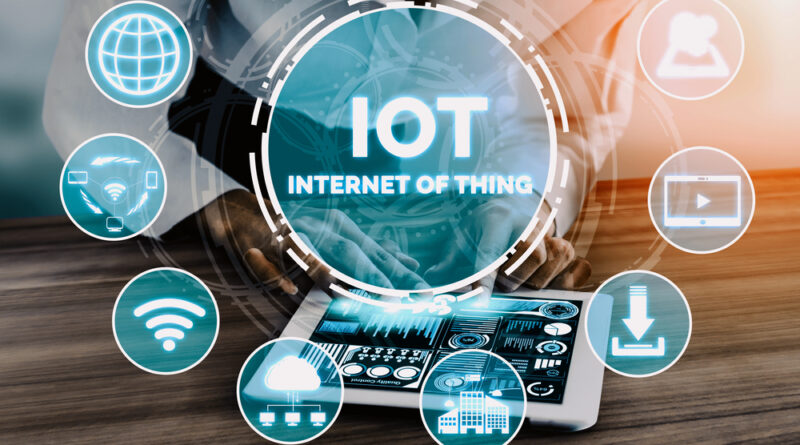IoT in Peril: Navigating the Rising Tide of Cyberthreats
From your smartwatch to your smart refrigerator, and even your car—everyday objects are increasingly becoming interconnected, joining a vast digital web known as the Internet of Things (IoT). This invisible network, connecting billions of physical devices around the globe, promises convenience, efficiency, and new opportunities. But behind this promise lies a darker, growing threat—sophisticated cyberattacks specifically targeting IoT devices.
This year, cyber experts warn that IoT represents one of the most significant and escalating threats facing global cybersecurity. According to technology analysts IDC, over 80 billion IoT devices are connected in 2025, collectively producing nearly 80 zettabytes of data—an unimaginable volume of information that’s increasingly vulnerable to compromise.
Vulnerabilities Grow Alongside Connectivity
The staggering growth of IoT creates an ever-expanding digital footprint, each device becoming a potential gateway for hackers. Security researchers from Forescout, in their recent 2025 Riskiest Connected Devices report, have revealed that IoT device vulnerabilities have surged dramatically. Routers, essential for internet connectivity, ranked highest in vulnerability—reflecting a troubling 15% year-on-year increase in device risk scores. Industries such as retail, manufacturing, financial services, government, and healthcare have been particularly impacted, highlighting the broad economic implications of IoT insecurities.
Yet, despite the growing threat, many IoT manufacturers still prioritise convenience and cost over security, releasing devices with outdated firmware, default passwords, and unpatched weaknesses. This creates a fertile landscape for cybercriminals.
AI as Both Weapon and Shield
Compounding these security challenges, attackers are increasingly harnessing artificial intelligence (AI) to amplify their threats. AI-driven malware and sophisticated ransomware campaigns are thriving amid IoT’s proliferation, launching automated, highly targeted, and adaptive attacks that traditional cybersecurity methods struggle to counteract.
High-profile ransomware attacks on medical devices, manufacturing systems, and critical infrastructure illustrate how devastating these IoT vulnerabilities can become. Attackers have realised the enormous potential of IoT’s vast and poorly defended attack surface, making IoT systems an attractive target.
On the defensive side, however, AI also presents powerful new tools for cybersecurity. Machine learning-powered anomaly detection systems can scan network data for suspicious behaviours, enabling proactive responses to threats. Experts recommend organisations incorporate AI-driven detection methods to complement existing security strategies.
The Threat of IoT Botnets
IoT devices have become notorious participants in botnet attacks—networks of infected devices that can launch devastating distributed denial-of-service (DDoS) attacks. The infamous Mirai botnet, which crippled large swathes of the internet in 2016, was just a taste of what was to come.
Today’s IoT botnets are more sophisticated, leveraging high-powered devices such as enterprise servers alongside simple IoT endpoints. AI-driven botnets have further lowered the barriers for cybercriminals, allowing them to launch more frequent and potent attacks. The recent 2025 Imperva Bad Bot Report by Thales noted an alarming rise in attacks targeting APIs that manage sensitive financial, healthcare, and e-commerce data, underscoring the increasing complexity and reach of botnet threats.
The Unique Challenges of IoT Security
Traditional cybersecurity measures—such as antivirus programs and firewalls—are challenging to implement on IoT devices, which often lack the processing power and storage capabilities of computers and smartphones. Moreover, IoT’s vast diversity means there is no universal security solution.
Another challenge is visibility. Many organisations simply don’t know the full range of devices on their networks, let alone their vulnerabilities or whether they have been compromised. This lack of transparency and oversight exacerbates the threat, making prevention and rapid response difficult.
Building an Effective IoT Risk Management Strategy
Cybersecurity experts strongly advocate for proactive and comprehensive IoT risk management, suggesting a multi-layered approach to securing connected ecosystems. This includes:
-
Adopting established frameworks, such as those provided by the National Institute of Standards and Technology (NIST).
-
Implementing robust incident response plans.
-
Minimising IoT devices to reduce attack vectors.
-
Deploying AI-enhanced threat monitoring systems.
-
Strictly managing device access with zero-trust policies and biometric authentication.
-
Regularly updating and patching device vulnerabilities.
These proactive measures represent a critical step toward securing IoT infrastructure, preventing breaches, and mitigating damage when incidents inevitably occur.
The Regulatory Conundrum
IoT’s rapid global adoption presents unique regulatory challenges. With devices manufactured worldwide and data frequently moving across borders, cohesive security standards and regulatory compliance remain elusive. International coordination remains minimal, creating a fractured landscape where security often falls through the cracks.
Governments and industry bodies continue debating appropriate standards and regulations to enforce security across the IoT ecosystem. Yet, the lack of universally accepted standards or enforcement mechanisms leaves many IoT devices vulnerable by design.
A Call to Action
We stand on the brink of unprecedented digital connectivity, with the IoT promising remarkable advances in technology and daily life. However, the same connectivity also multiplies our risks exponentially. If cybersecurity is not integrated from inception through every stage of IoT deployment, the consequences could be catastrophic—not merely digitally but in the physical world too.
As threats grow more complex, organisations must acknowledge IoT cybersecurity as a fundamental necessity rather than a peripheral concern. It’s no longer enough to be reactive; IoT demands proactive vigilance, AI-driven threat intelligence, and robust, coordinated global regulation.
In an interconnected world, cybersecurity isn’t just about protecting data—it’s about safeguarding our lives, our infrastructure, and our future. The era of IoT demands a vigilant new approach: one that anticipates threats, innovates defences, and continuously evolves to stay ahead of a dynamic and dangerous cyber landscape.
Photo Credit: DepositPhotos.com

